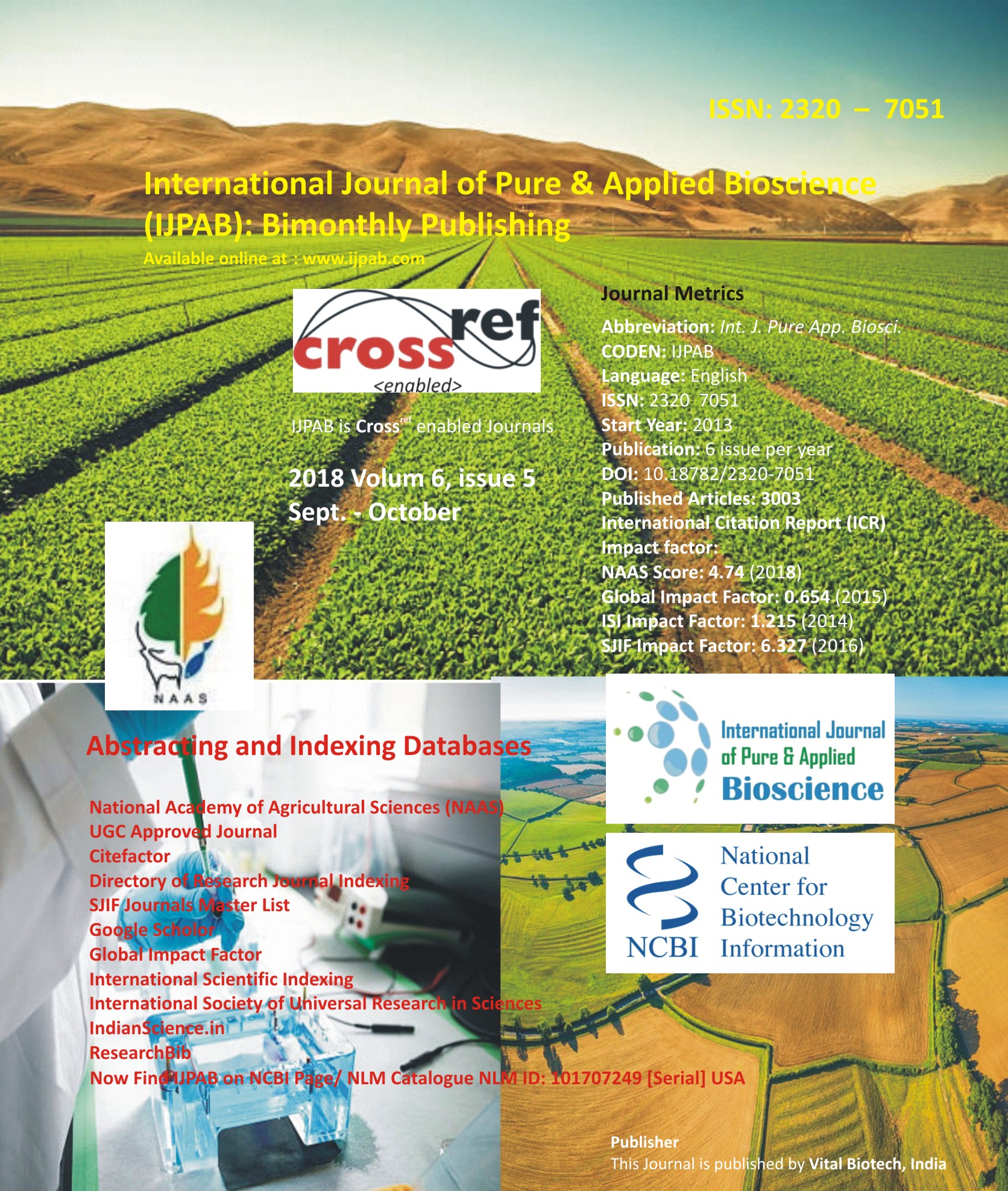
-
No. 772, Basant Vihar, Kota
Rajasthan-324009 India
-
Call Us On
+91 9784677044
-
Mail Us @
editor@ijpab.com
International Journal of Pure & Applied Bioscience (IJPAB)
Year : 2018, Volume : 6, Issue : 5
First page : (367) Last page : (376)
Article doi: : http://dx.doi.org/10.18782/2320-6718
Comparison of Molecular and Morphological Diversity Analysis of Tetraploid Cotton (Gossypium hirsutum L.)
Dharti Patel1, J. A. Patel2, R.A. Gami3*
1Department of Plant Molecular Biology and Biotechnology, CPCA, SDAU, Sardarkrushinagar (Gujarat)
2Cotton Research Station, S.D. Agricultural University, Talod (Gujarat)
3 Sorghum Research Station, S.D. Agricultural University, Deesa (Gujarat)
*Corresponding Author E-mail: ramangami@gmail.com
Received: 12.07.2018 | Revised: 25.08.2018 | Accepted: 4.09.2018
ABSTRACT
The present investigation carried out to find out molecular diversity using 30 RAPD primers and to estimate morphological diversity in 36 genotypes of cotton through Mahalanobis’s D2 analysis for 8 morphological characters, the field experiment was laid out in randomized block design with three replications. The number of RAPD fragments generated per primer ranged from 3 (OPC 14) to 14 (OPD 01). Twenty one primers resulted in 100 % polymorphism. The PIC value ranged between 0.66 to 0.92 with an average of 0.83.The similarity coefficients ranged from 0.26 to 0.87, which indicate high variability among 36 cotton genotypes. Maximum similarity 87% was observed between CSH-2931 and F-2454 and lowest similarity 26% was observed between GSHV-164 and BPHI-537. Based on D2 statistics, 36 cotton genotypes were grouped into 7 clusters. Among the 7 clusters, cluster I was the largest with 18 genotypes followed by cluster II, III and IV with 9, 3 and 3 genotypes, respectively. The cluster V, VI and VII were solitary clusters. Clustering from morphological data as well as RAPD data by NTSYS-pc version 2.02 programmes, the same clustering pattern observed. In addition to that, collectively fifty percent genotypes occupied same clusters. This indicated that the clustering of genotypes through NTSYS-pc version 2.02 programme is more reliable as compared to D2 analysis in the present investigation.
Key words: Tetraploid cotton, D2 analysis, Morphological and Molecular diversity
Full Text : PDF; Journal doi : http://dx.doi.org/10.18782
Cite this article: Patel, D., Patel, J.A. and Gami, R.A., Comparison of Molecular and Morphological Diversity Analysis of Tetraploid Cotton (Gossypium hirsutum L.), Int. J. Pure App. Biosci.6(5): 367-376 (2018). doi: http://dx.doi.org/10.18782/2320-7051.6718

